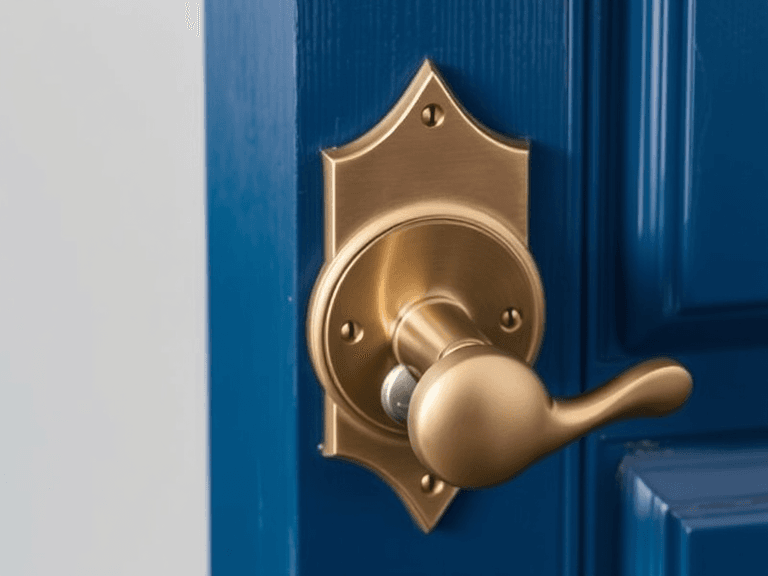For security purposes, you may want ZZ to install a second deadbolt on your door for added security. When it comes to home security, one of the most crucial aspects is the condition and type of locks on your doors. A well-installed, high-quality lock serves as the first line of defense against unauthorized access and ensures the safety of your loved ones and valuables. Whether you’re replacing an old, worn-out lock or installing a brand-new one, understanding the process and options available is key. In this guide, we will walk you through everything you need to know about door lock installation and replacement.
Why is Proper Door Lock Installation Important?
A properly installed lock does more than just secure your home; it enhances convenience, protects against forced entry, and ensures peace of mind. Poorly installed locks, on the other hand, can be easy targets for burglars and may fail to function correctly over time, leading to inconvenience or even lockouts.
Common Reasons for Door Lock Replacement
- Wear and Tear: Over time, locks can deteriorate due to constant use, exposure to weather elements, or aging mechanisms.
- Lost Keys: If you’ve misplaced your keys or suspect they’ve been stolen, replacing the lock is a wise safety measure.
- Break-Ins: After a security breach, upgrading your locks can prevent future incidents.
- Upgrading Security: Modern locks offer advanced features such as smart keypads, biometric systems, and enhanced durability.
- Change of Ownership: Moving into a new home? Replacing the locks ensures you’re the only one with access.
Types of Door Locks to Consider
Before jumping into the installation or replacement process, it’s important to choose the right type of lock for your needs:
- Deadbolts: Known for their strength and security, deadbolts are a popular choice for exterior doors. They come in single-cylinder and double-cylinder variants.
- Knob Locks: Common for interior doors, knob locks are less secure and should be paired with a deadbolt for exterior use.
- Lever Handle Locks: Frequently used in commercial settings, these are easier to operate and provide a sleek look.
- Smart Locks: Offering keyless entry, these locks can be controlled via smartphones, keypads, or voice commands.
- Mortise Locks: Ideal for heavy-duty use, these locks are recessed into the door and provide exceptional security.
Tools and Materials Needed for Installation
Before starting the installation or replacement process, gather the following tools and materials:
- New lockset
- Screwdriver (flathead and Phillips)
- Tape measure
- Drill with appropriate bits
- Chisel
- Hammer
- Pencil or marker
Step-by-Step Guide to Installing or Replacing a Door Lock
1. Remove the Old Lock
- Unscrew the fasteners from the interior and exterior sides of the lock.
- Carefully remove the lock mechanism and the latch assembly from the door.
2. Prepare the Door
- Check the door’s condition and alignment. Ensure the latch hole and strike plate area are properly aligned.
- Use a chisel to make adjustments if the latch or strike plate doesn’t fit snugly.
3. Install the New Latch
- Insert the new latch into the latch hole, ensuring it’s positioned correctly (the beveled edge should face the door jamb).
- Secure it with screws using a screwdriver.
4. Attach the Exterior Lock
- Place the exterior part of the lock through the hole in the door. Align it with the latch assembly.
5. Secure the Interior Lock
- Attach the interior side of the lock, ensuring it aligns with the exterior side.
- Tighten the screws to secure both sides together.
6. Install the Strike Plate
- Position the strike plate on the door jamb and mark the screw holes.
- Drill pilot holes and secure the strike plate with screws.
7. Test the Lock
- Ensure the lock operates smoothly. Test the key, knob, or lever to verify functionality.
Tips for a Successful Installation
- Measure Twice: Always double-check the measurements of your door and the lockset to ensure a perfect fit.
- Choose Quality Hardware: Invest in durable, high-quality locks that meet your security needs.
- Follow Instructions: Refer to the manufacturer’s instructions for specific guidance on your lock model.
- Seek Professional Help: If you’re unsure about any step, consult a professional locksmith.
When to Call a Professional
While DIY installation is feasible for many homeowners, some scenarios require professional assistance:
- You’re installing a high-security or electronic lock.
- The door or frame requires significant modification.
- The lock doesn’t align properly, even after adjustments.
Maintaining Your Locks
To ensure longevity and smooth operation, follow these maintenance tips:
- Lubricate the lock mechanism with graphite or silicone-based lubricant annually.
- Tighten loose screws and components promptly.
- Clean the lock exterior with a damp cloth to remove dirt and debris.
- Regularly inspect for signs of wear or damage.
Conclusion
Door lock installation and replacement are essential tasks for maintaining home security and functionality. Whether you opt for a DIY approach or hire a professional, the key is to choose the right lock for your needs and ensure it’s installed correctly. At ZZ the HandyMan, we specialize in providing top-notch lock installation and replacement services to keep your home safe and secure. Contact us today for expert assistance with all your lock and home improvement needs!


